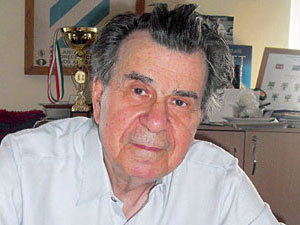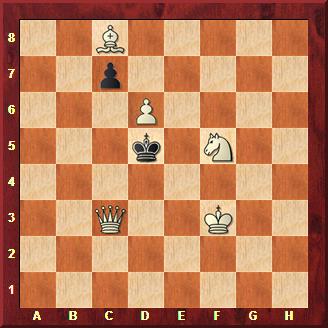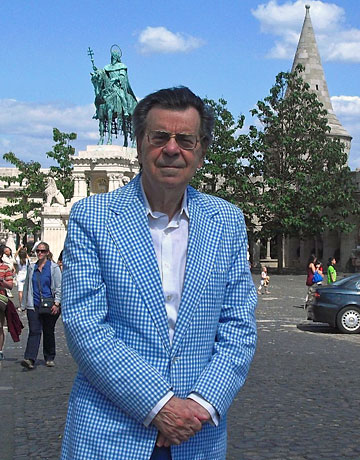


An article on the ChessBase news page of 11/7/2014 was entitled "A machine that composes chess problems" raised my interest. I quote from its introduction.
Chess problems are an art – positions and solutions, pleasing to the mind and satisfying high aesthetic standards. Only humans can compose real chess problems; computers will never understand true beauty. Really? Dr Azlan Iqbal, an expert on automatic aesthetic evaluation, imbued his software with enough creativity to generate problems indefinitely. The results are quite startling.
A new artificial intelligence approach called the DSNS (digital synaptic neural substrate) was developed that enables a computer to become ‘inspired’ by the different types of objects, fed into it, such as photographs of people, painting masterpieces, classical music, chess tournament games and other chess problems.
In his article Dr Mohammed Azlan Iqbal presented ten selected work composed by the machine:
Chess problems created by ChestheticaThe problems below include the exact dates and times Chesthetica created the compositions. Typically, human composers do not create more than one problem per day (in some cases only one per month). But with machines the time index is relevant: Chesthetica may compose ten or twelve on the same day.
|
Instead of further details, since I am not a computer expert, let me study the products, since that is actually my field. The solutions to most of the problems are hidden and require a click to be revealed. This is in order to offer you the opportunity to try and solve them yourself, as an additionaly little benefit.
Here is the first Chesthetica problem we want to look at:
Chesthetica, 14/9/2014 3:16:47 PM

White to play and mate in three moves
The solution given is: 1.Qc3 Rh7+ 2.Bxh7. Let us tke a closer look. 1.Qc3 threatens both 2.Qg3 mate and 2.Nh3 mate. But there is no need at all for the e1 bishop, and its presence is in fact causing duals. It is a serious mistake. So we can simply remove it.
Furthermore in the starting position there are three possibilities for checking the white king, but none result in mates. That significantly helps the solving. On the top of that the key move takes away two flight squares of the black king. The remaining check opportunity only makes the problem one move longer, so it is virtually only a two moves problem. If we remove the bishop on e1 and move the one on g6 to h7, and we move the black rook from e7 to e8 we have the following position:

Now it is White to play and mate in two moves
The solution: 1.Qc3 Re3 (to counter both threats, 2.Qg3 and 2.Nh3 mate) 2.Qf6 mate. Much more satisfying, don't you think?
Here's a problem I created with similar material:
Pal Benko, 2015

White to play and mate in two moves
The solution 1.Ng1! [1.Ng5? Qb3!] 1..Bf3 2.Nh3 mate. There is a twin:
Pal Benko, 2015

White to play and mate in two moves
The solution 1.Ng5! [1.Nd2? f1N!] 1...Qb3 2.Qd4 mate.
Here is another work to show the provided checks:
Pal Benko, 2015

White to play and mate in two moves
The solution 1.Qb8! We can see two checks to the white king, but both KxRe3 and KxRd4 results discovered mate. After the key move it changes to NxRd4 and NxRe3 mate. We can find further ideas in this piece: the position is symmetrical, the axis is the b1-h7 diagonal. But the key is asymmetrical, that makes it interesting.
And let us see an item from the past.
Pal Benko, Chess Life 1980

White to play and mate in two moves
The solution 1.Qb4! A waiting move that gives two flight squares for the king to escape! Furthermore the possible moves of the black pawn give a theme to this miniature. Can a computer appreciate this? The answer is hardly ever possible.

Select games from the dropdown menu above the board

Pál Benkö, 86, is a Hungarian-American chess grandmaster, openings theoretician, author and problemist. He became Hungarian champion when he was 20 and finished in first place (or tied for first place) in eight US Championships, a record: 1961, 1964 (in that year he also won the Canadian Open Chess Championship), 1965, 1966, 1967, 1969, 1974, 1975. Benko's highest achievements were playing in the Candidates Tournament with eight of the world's top players in 1959 and 1962. He qualified for the 1970 Interzonal tournament, the leaders of which advance to the Candidates. However, he gave up his spot in the Interzonal to Bobby Fischer, who went on to win the World Championship in 1972.

In addition to his success as a player, Benko is a noted authority on the chess endgame and a composer of endgame studies and chess problems. He is an over-the-board GM and also a FIDE IM of chess composition. The only other person we know who has these two titles is Jan Timman of the Netherlands.
– Part two of Pal Benko's article will follow soon –